Digging Deeper: Teaching Inference in Upper Elementary
By Mary Montero
Share This Post:
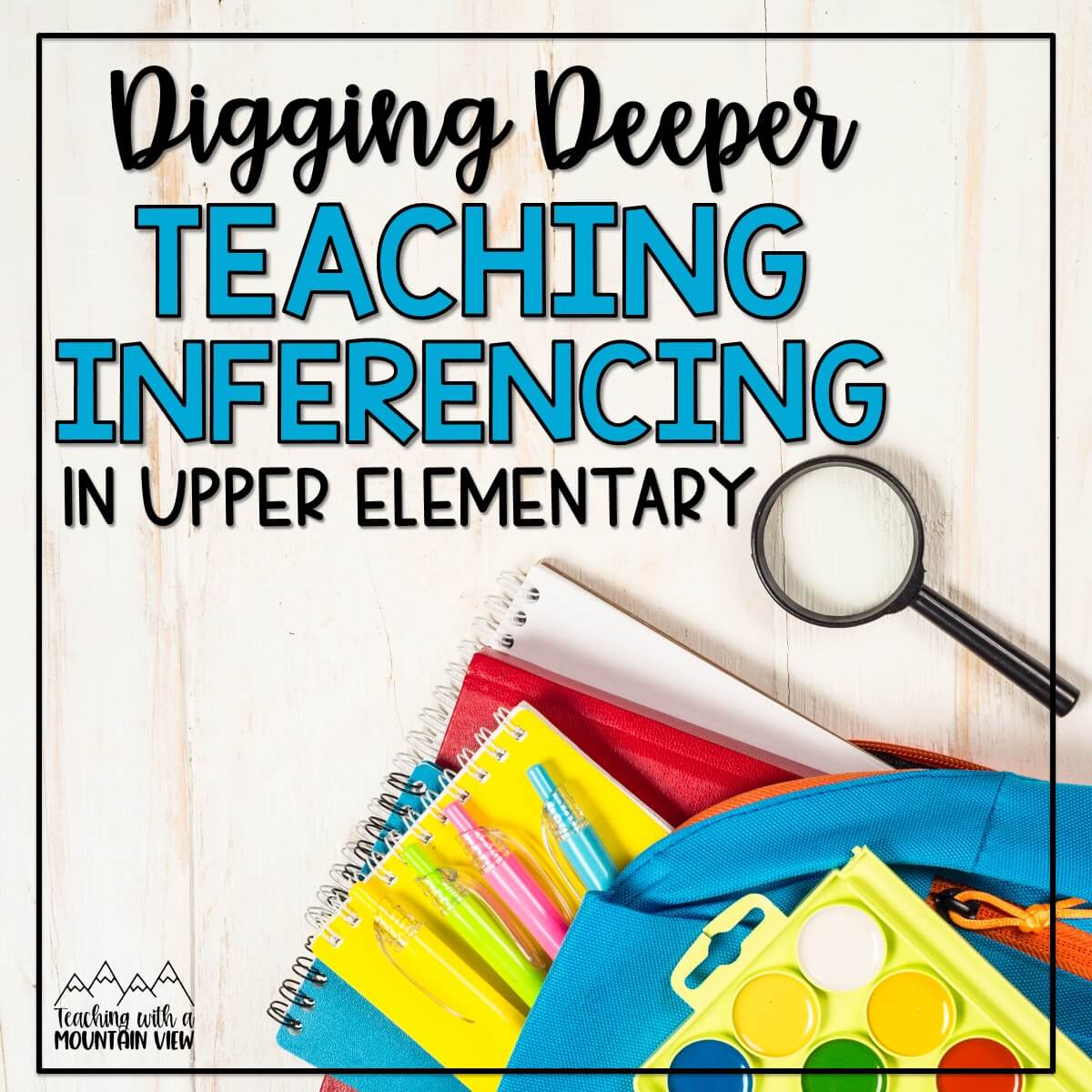
Teaching inference is an important skill. Of course, by the time they reach upper elementary, many students are familiar with it, but it’s such a critical one and one that we can continue to hone and develop throughout our entire lives. So whether I’m teaching third or fifth grade, I like to review and extend this critical reading concept every year, all year!
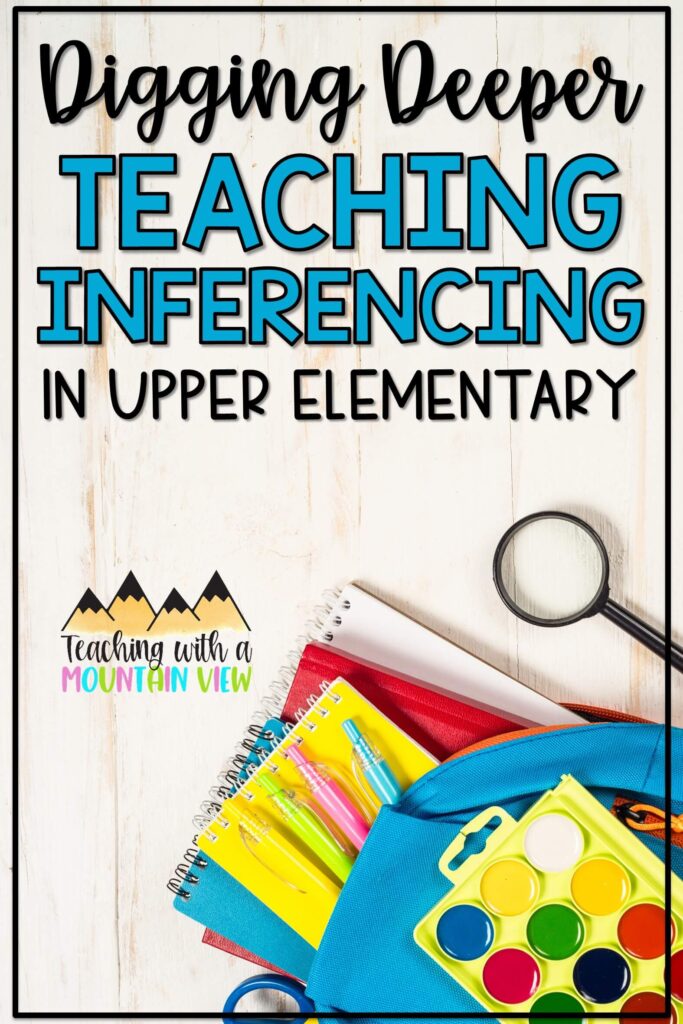
Making inferences is something that all good readers do. Helping students learn to intentionally make inferences as they read will make them stronger readers, as well as help them focus throughout the text. So, how do we get students to go deeper than the obvious when teaching inference in upper elementary? I break teaching inference down into 4 steps.
Step 1: What’s the difference between Literal and Inferential?
I always start by activating students’ prior knowledge and building on the inferencing skills they’ve already developed in lower elementary. Typically I like to equate making an inference to making a hypothesis in science class.
Before you do an experiment, you look at all these factors and you decide what you think will happen using logic and evidence. You have to ask yourself what happens when you mix these components and what evidence you have that this reaction would be consistent.
This is the same when you make an inference in English class. The conclusions you draw in your head lie inside the story as you read, whether you realize it or not.
I teach my students to “collect evidence” for inferences as they read, which also helps guide students toward making accurate inferences instead of just guesses. In lower elementary grades, a lot of inferences are drawn from clues in the illustrations or very basic clues like weather clues and specific adjectives the writer uses.
As we move into the upper grades, students need to pay closer attention to the text itself. One tip is to pay attention to small vocabulary differences. For example, did the author tell us the character was sad or was the character devastated? Did someone speak with clenched fists, tears stinging at their eyes? Did someone’s eyes grow wide? As students begin to pay attention to these small details and specifically call out the inferences they are making based on them, their comprehension improves and the book becomes more of a “movie” in their minds.
This is also when I discuss the difference between literal and inferential observations. This is a crucial, not-to-be-missed step in teaching inferences that I feel can easily be overlooked. We MUST make sure our students understand the difference between a literal observation and how those literal observations lead up to make excellent inferences. Be sure to click the link above to see the lessons I use for teaching this, and when in doubt, START THERE when teaching inference!

Step 2: Practice Making Simple Inferences Using Pictures
Even though upper elementary students are familiar with making inferences, they still need opportunities to brush up on their inferencing skills. We always, always, always start by making inferences using pictures. The best way to get instant engagement is to have your students bring in pictures to make inferences about. It will be really easy at first… You will hear things like, “Oh, she’s wearing a short-sleeved shirt, so it must be warm out!” but as those right there inferences are done, the really deep ones start to come out! We do this type of inferencing pretty extensively, and we do it all throughout the year, and I am constantly incorporating it into my literacy centers for review.
Don’t forget about using wordless picture books to teach inference! After we do a lot of work with pictures, I move to wordless picture books. Two of my favorite pictureless books for teaching inference are Flood and Tuesday (Amazon affiliate links).
In addition to discussing inferences within texts students are already using during read alouds or guided reading, using shorter texts can make practice more efficient for independent practice.
I like to model and practice as a class first. I start by giving students a very basic paragraph scenario and asking them to make inferences about it. Sometimes there is one “best” answer that we discuss as the most correct inference, but other times there are lots of answers that could be correct (as long as it is logical and backed up by evidence). I love using these task cards to get students started.
Are you looking for a super consistent way to review? I love how people use “inference of the day” as a daily challenge for students! Leslie from LaLaTeacherLife shared this image of how she uses them every single day! I have an entire year-long bundle of inference task cards that you can use to accomplish this. There are different cards and riddles for each season, which students just LOVE!
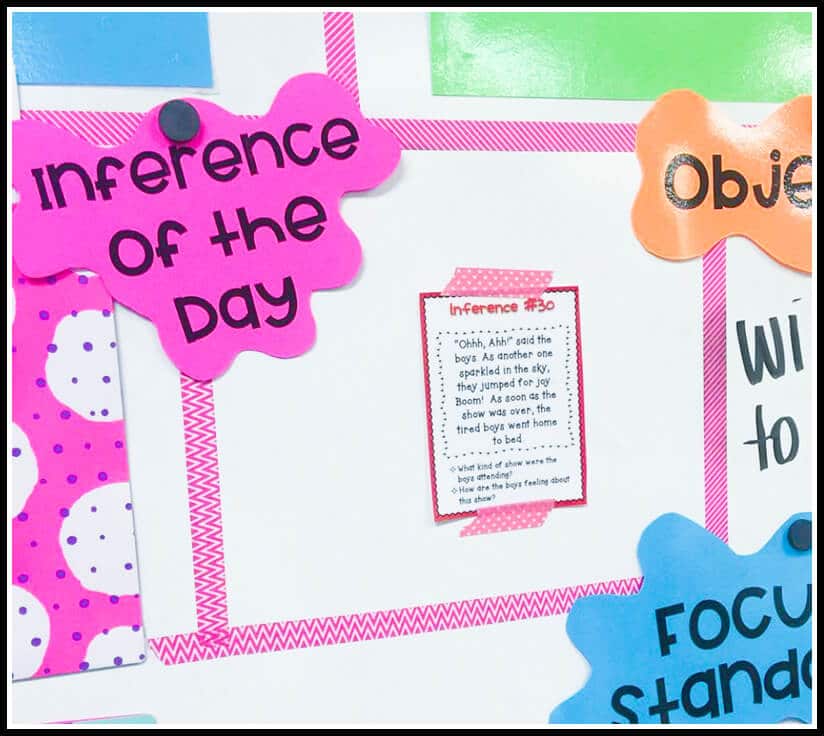
Step 3: Draw Out Specific Ideas from a Text to Analyze
Once we’ve worked with brief texts and pictures to make inferences, we begin working with longer texts as a class. When we are working in small groups, I start pulling out longer texts to make inferences with. I highlight areas of the text for students to analyze by doing a guided reading practice together. I make sure to model all of my thinking out loud and discuss why certain details jumped out at me. This is a great opportunity for students to ask questions and get clarity about what they are looking for.
Here is another great opportunity to incorporate picture books into your lessons! I chose four of my very favorite picture books for teaching inference and added guided inference questions for each of them. Although I can usually come up with decent inference questions on the fly, I really took the time to come up with specific, digging deeper inference questions to use with these books. These are NOT your average inference questions, and they are meant to be used with upper elementary. I provided them in either a discussion guide style or worksheet style if you’d like students to write their answers. 🙂
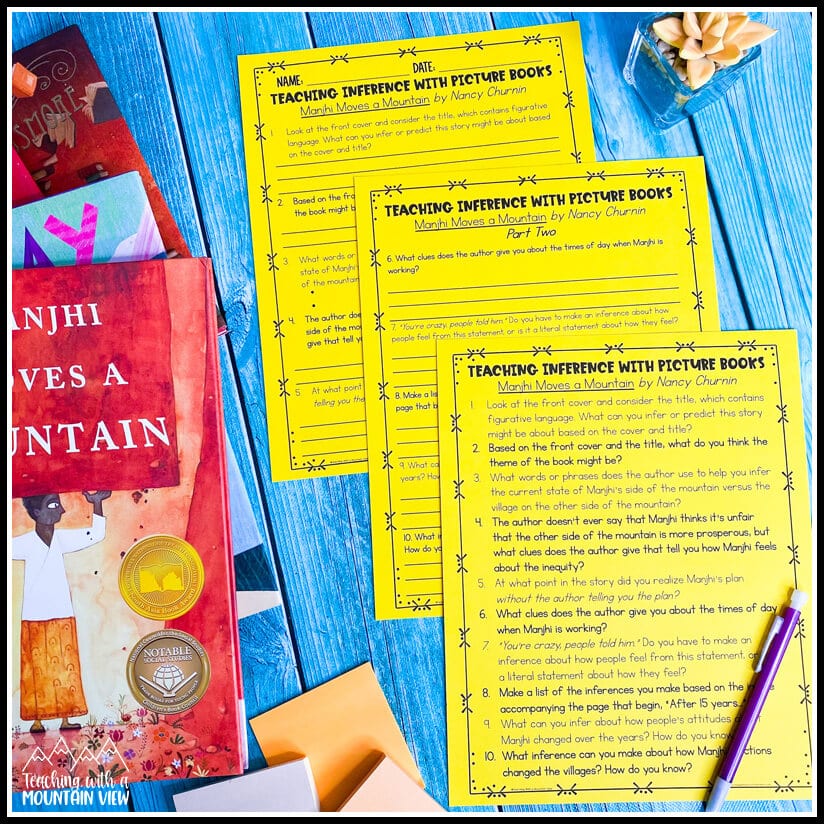
This differentiated pack of inference activities is great for independent practice. It is super scaffolded so you can use it in guided reading groups and then have students complete the tasks independently and without the scaffolding supports as well.
For upper elementary students, this is also a good time to discuss the elements of suspense and surprise compared to the students original inferences. We are often misled by authors to keep mystery alive in stories. This is a great place to talk about author intent as well as how authors can manipulate readers. For example, you can relate it to how J.K. Rowling kept Snape a mystery throughout the Harry Potter series.
Step 4: Independent Practice with Differentiation
The final step is to promote independent practice. Of course, we focus on making inferences with our novels ALL YEAR LONG, but I insist on incorporating specific inference practice as well. I do this with short differentiated texts that have been explicitly designed for students to make inferences with. For some students, it can also be helpful to provide sentence starters or sentence frames to form their inferences.
Inference Topple Blocks Game
I have blogged quite a bit about using Topple Blocks for review, and this one is no exception! It’s super easy setup and super impactful for students. The premise is simple: they have to earn their turn! Roll the dice, and whichever color they roll is the color section they need to complete on the game board. Once they have answered one of the questions (ALL students in the group answer it so nobody is ever just sitting around and waiting), they confer to see if they agree on the answer, then the player gets to pull their block. See? Super easy, but FULL of inference practice!
You just need to purchase the blocks HERE (Amazon affiliate link) and print out the Inference Topple Blocks Game. If you don’t have topple blocks, no worries! I also provide ideas for how to use the games without any extra supplies HERE.
Inference Paired Passages
These inference paired passages are a MUST during our inference unit. I created them because it was so important to me that students were able to make connections between related texts, and they accomplish that exactly.
Inference Project Cumulative Activity
What better way to practice inferencing than a highly engaging and real-world inference project?! Your students will have a blast tagging along on a camping trip while practicing their inferencing skills along the way. Each activity reviews inferencing in a different way, allowing for easy differentiation. You can easily create different packets based on the ability of the different students in your class. It’s perfect for small groups, centers, whole group work, morning work, homework, enrichment, etc. I usually use this at the end of our official inference unit as an assessment.
FREE Inference Lesson
Finally, here’s a quick lesson you can use while teaching inference to help your students make observations from pictures using a simple chart.
Still looking for more? Here are links to previous inference posts!
Mary Montero
I’m so glad you are here. I’m a current gifted and talented teacher in a small town in Colorado, and I’ve been in education since 2009. My passion (other than my family and cookies) is for making teachers’ lives easier and classrooms more engaging.







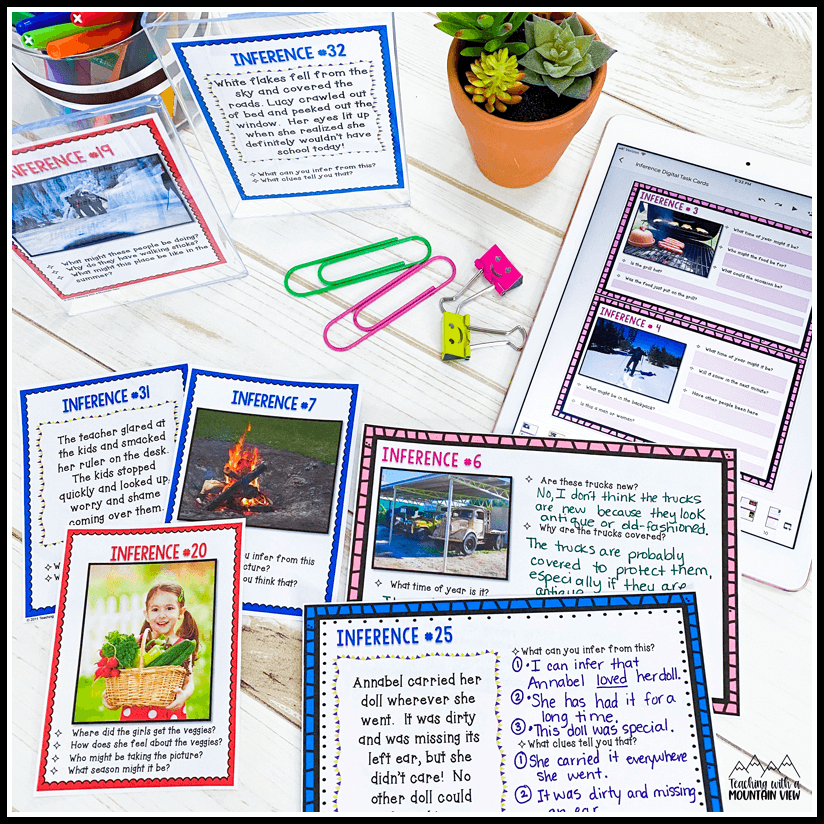
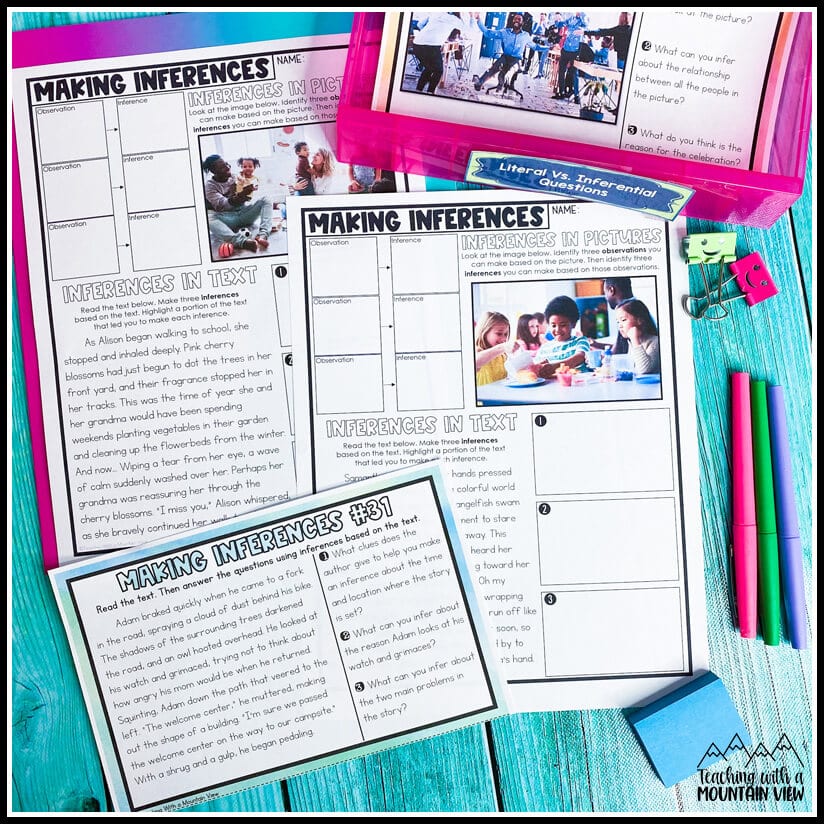
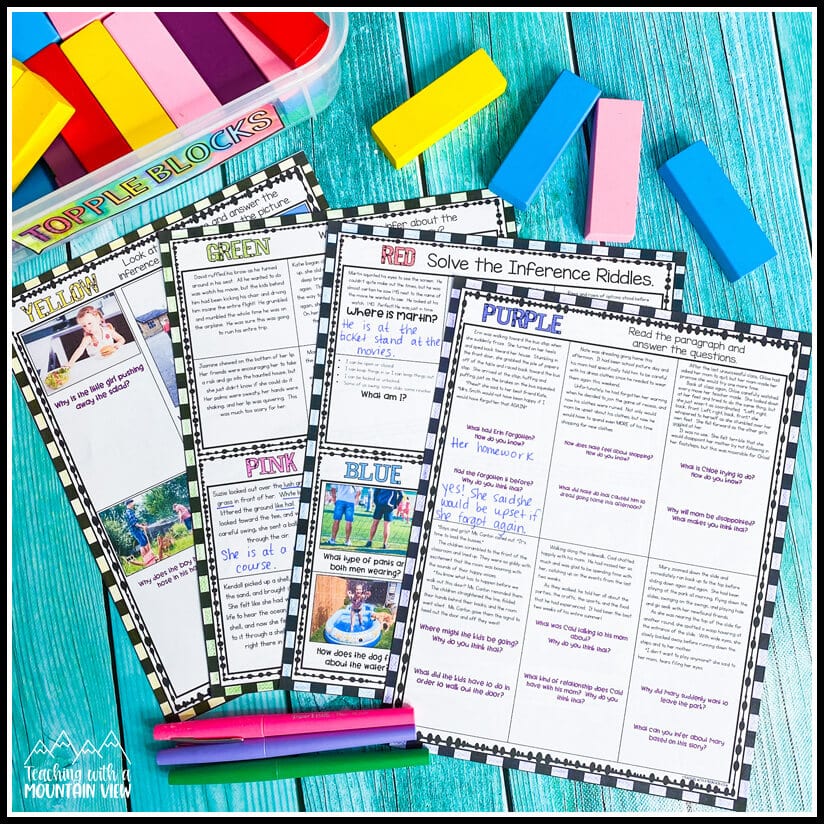
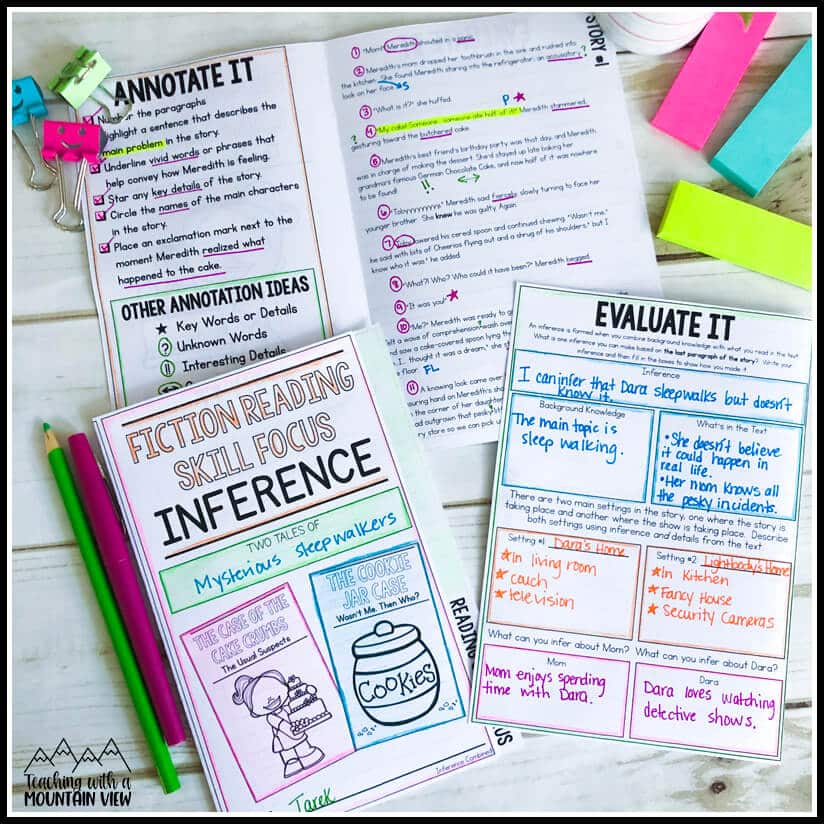





Hello! I bought Milo Imagines the World, based off of your book list. Do you have an activity and/or questions to go along with that one? I’d happily purchase!